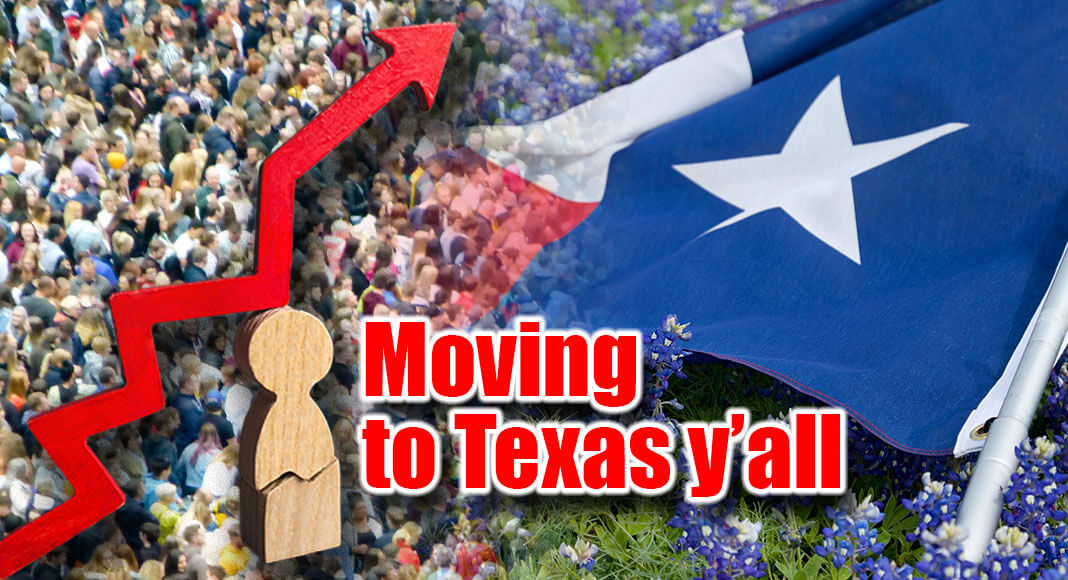
Texas Border Business
The Census Bureau recently released population estimates by state for the period from July 2020 to July 2021. The total US population scarcely changed, but there were seismic regional shifts. Let’s take a quick tour.
The Northeast lost nearly 366,000 residents and the Midwest lost almost 94,000. The South increased by over 816,000, and the West gained 34,000. The perennial lure of the Sun Belt endures.
The Texas population grew far more than any other state, up over 310,000 for the year. Florida (211,000), Arizona (98,000), and North Carolina (94,000) also saw substantial rises, as did Georgia, South Carolina, Utah, Tennessee, and Idaho (all up at least 50,000). Again, the South dominates.
The states with the largest shrinkage between 2020 and 2021 include New York (down over 319,000), California (-262,000), and Illinois (-114.000). Populations declined in 18 states, including Massachusetts, Louisiana, and Pennsylvania.
One obvious factor is that Texas ranks only behind Utah among states with the youngest populations (tied with Alaska) with an average household size well above the national average. The result is a higher natural rate of increase from patterns in births over deaths.
Reasons for the movements are many and varied, but there are some common themes. First, states gaining population typically have lower tax rates. The Tax Foundation estimates that the effective state and local tax rate in New York (the highest) is 14.1%, which translates to almost $10,000 per person. Other population-losing states are also high, with California ranking 8th ($7,529 per person) and Illinois 10th at $6,450. Texas is 47th at 8.0% (just $4,143 per person), Florida is 43rd), and Arizona is 45th. Tax burdens clearly affect household budgets and are particularly problematic with the pandemic still causing financial stress and inflation rising. There is, of course, a point at which taxes are insufficient to support adequate investments in infrastructure, education, health and safety and other public priorities essential to maintaining quality of life and prosperity over time. Texas faces long-term challenges in this regard.
Destination states also generally have higher economic growth rates and, hence, greater opportunities. Texas and Arizona are two of only four states which have fully recovered jobs lost during the pandemic. COVID incidence and policies have also played a role in some location decisions.
The cost of living is yet another consideration. Typical apartment rental rates and home purchase prices are lower in the growing states, and many of the most expensive markets are found in population-losing states. For example, in Los Angeles, average rent for a two-bedroom apartment is almost $4,700, compared to $2,544 in Dallas or just $1,693 in Austin.
I expect these shifts to continue for the time being. Texas, here we come! Stay safe!
____________________________________________________________
Dr. M. Ray Perryman is President and Chief Executive Officer of The Perryman Group (www.perrymangroup.com), which has served the needs of over 2,500 clients over the past four decades.















